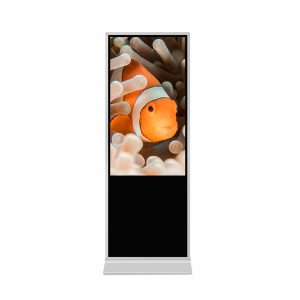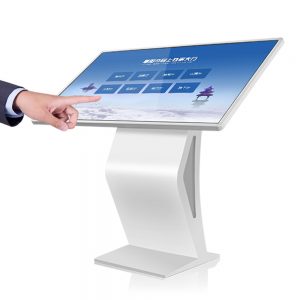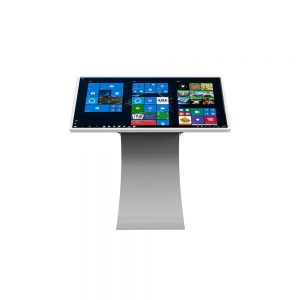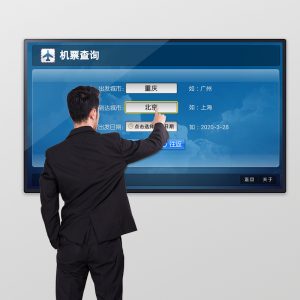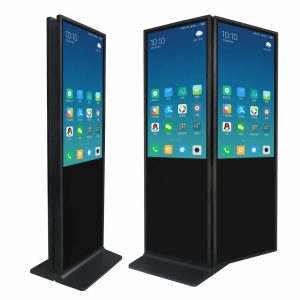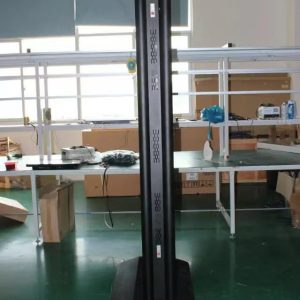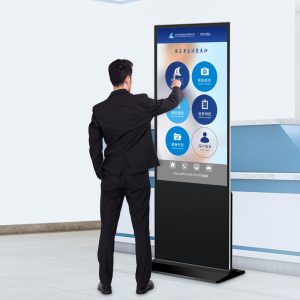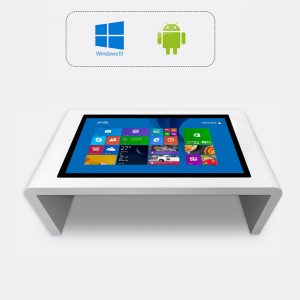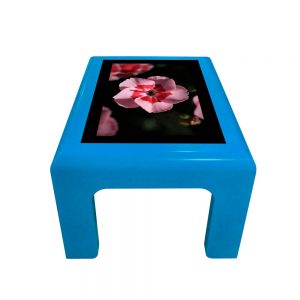Touch Screen display
A touchscreen or touch screen is the assembly of both an input and output device. The touch panel is normally layered on the top of an electronic visual display of an information processing system. The display is often an LCD, AMOLED or OLED display while the system is usually a laptop, tablet, or smartphone.
Showing all 12 results
Benefits of Touch Screen Technology
When deciding on new interface technology, whether it is for professional or personal use, the touch screen component has become a popular option to consider. With a hard durable surface, with a thin plastic screen shield, touch-screen devices are less prone to screen damage than devices with keypads. Moreover, the resilient and easy-to-use nature of touch-screen devices make them suitable for users of all ages and skill levels.
Replacing the Mouse and keyboard
The process of using a touch screen monitor allows for the absence of the traditional computer mouse and keyboard. Without them, the touch screen functions and programs are directly accessible by touching areas of the screen. The absence of a mouse and keyboard also allows for easier transport and relocation of the device.
Reality Based Interaction
Having a more direct and natural interaction with electronic devices is an appeal of this technology. Lacking the multiple devices needed to communicate with traditional computers, touch screen technology creates a simpler and more intuitive interaction.
Space and Mobility
Standard computer systems that require a mouse and keyboard for operation take up more space than touch screen devices. Touch screen devices thus can be used with greater ease in areas where a user does not have a lot of room to place a computer system.
Durability
The devices with keypads are susceptible to damage. For instance, a keyboard or a keypad has separate keys and related circuits, any of which can break or become inoperable due to dirt, crumbs, water damage, etc. In contrast, touch screens can be protected more easily because they do not have as many parts. This means that touch screens have the potential to have a longer product life than standard monitors and computer systems.
Speed
The fact that icons can be used with touch screens greatly increases the speed at which the user can manipulate the system applications. It takes far less time for the brain to process an image than it does to read an entire sentence of text, so users can go through the application processes in a matter of seconds and be on their way faster. Speed also is increased because users don’t have to type out a response.
Improves Accessibility
Touch screens have the potential to be more comfortable for the user. Impaired individuals can use touch-screen technology, especially those who find using a mouse or keyboard difficult. For example, touch screens often organize information in a clear and simplified way, so visually-impaired individuals can operate them. Similarly, disabled patrons who have difficulty speaking or standing in long lines can take advantage of touch-screen technology to access information easily and at their own pace. In addition, touch-screen interfaces are often so easy to use that even people with little or no experience using computers can operate one with minimal or no supervision. They also can be more accessible for those with poor eyesight because icons sometimes can be easier to distinguish than text.
Easy User Interface
One of the major benefits of touch screens is the overall ease of use. Since the act of touching is instinctive, touch-screen devices are relatively simple to operate. A clearly defined set of menus is easy to navigate through when all the user has to do is touch the desired option. The user-friendly nature of the touch screen also helps save time.
Easy to Clean and Maintain
Touch screen devices have smooth, flat screens, which makes cleaning a much easier task. Devices which do not require a keyboard tend to collect less dust. The function of the computer mouse is eliminated as well–a device with many crevices that are hard to clean. The wireless nature of the touch screen also eliminates the mess of tangled power cords behind the desk.
Saves Time
Several businesses use touch-screen technology to accelerate their speed of service, allowing customers to serve themselves at touch-screen kiosks. Customers use these self-serve kiosks for simple services, such as purchasing movie tickets, paying bills or accessing account information quickly. As a result, businesses can offer shorter lines and reduced wait times for other customers, while reducing the need to hire, train and pay employees.
Thus we can conclude that Touch screen devices are user friendly and have many advantages that will be beneficial for the Touch Screen users.


